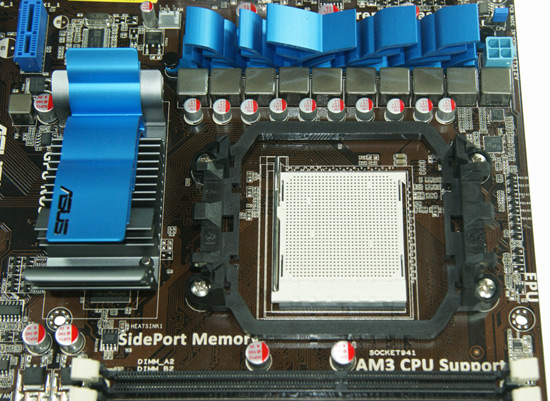AMD's 785G Chipset - Revolutionary or Evolutionary?
by Gary Key on August 4, 2009 5:00 AM EST- Posted in
- Motherboards
We have come a long way lately in regards to the ability of modern integrated chipsets to perform a variety of tasks well. Not only do they handle current office and even specialized application software with aplomb, the capabilities now on-board allows the same system to be an HTPC powerhouse or even a casual gaming system for the family.
True, a gaming aficionado would never be caught
dead with one of these systems, but I bet one might just reside down the
hallway as a second system or depending on the motherboard, it might be the
central component in a SFF gaming setup.
That might sound crazy, but the latest IG based boards offer the same
level of BIOS options for overclocking, electrical components, and quality of
their more expensive non-IG counterparts, plus significant more options in the uATX form factor.

This brings us to our next subject. It's odd that the first tangible benefits of the ATI acquisition should come in the form of chipsets, but we'll take what we can get. Since AMD acquired ATI and started aggressively pursuing the chipset market, we have seen decreasingly fewer reasons to buy anything but an AMD chipset for an AMD system. Supporting 8-channel LPCM continues to be the only reason to opt for an NVIDIA chipset over AMD's offerings. The tweaks to the UVD engine are nice, particularly the ability to support acceleration of multiple video streams and detail enhancements on the fly.
No one looking to build a PC capable of light or casual gaming will be disappointed either. While we would still like to see better performance out of all integrated graphics chipsets, the 785G is competitive with the rest of the market. It will play games like Sims 3 or even Left 4 Dead at reduced quality settings, and it can do so better than its closest Intel IGP competitor. The only chipset that comes close in gaming performance is the NVIDIA GF9300/9400 series, but those boards are priced anywhere from $25 to $40 more.
Therefore, the comparison to Intel is an inevitable one. The direct price competitor to the 785G is Intel's G41, a horribly crippled and price reduced version of the G45 chipset. You lose PCIe 2.0 and any sort of H.264/VC1 video decoding abilities, all in exchange for a lower price. It just gets worse from a feature viewpoint when combining the ICH7 Southbridge with it. From this perspective, there's just no real reason to pick the G41 platform over a 785G configuration. Intel is resting on its ability to sell crappy chipsets with really good CPUs, and AMD is relying on a great chipset to sell a, well, pretty good CPU as well.
The AMD 785 is simply superior in our opinion and it receives our full endorsement. Now, which motherboard should you decide to purchase is the question we will answer next.










43 Comments
View All Comments
R3MF - Wednesday, August 5, 2009 - link
^ bump ^R3MF - Thursday, August 6, 2009 - link
^ bump ^dragunover - Friday, August 7, 2009 - link
Screw you and you bumps.